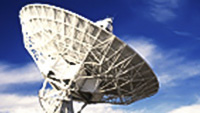Search and order online
Rosetta First Earth Flyby
- Video Tape only
- Title Rosetta First Earth Flyby
- Released: 04/03/2005
- Language English
- Footage Type Documentary
- Copyright ESA
- Description
In the night 4-5 March, ESA's Rosetta's probe has make its first planetary fly-by, using the Earth to give it additional momentum for its ten-year travel to comet 67/P Churyumov-Gerasimenko.
This critical operation went as planned-the ESA TV Service provides a summary of theh events during the night shot at Mission Control in ESOC (Darmstadt, Germany), plus images of science observation of Earth and Moon by Rosetta's instruments that were processed and released during the days following the event.
The transmission includes soundbites with Rosetta Project Scientists Gerhard Schwehm, and Rosetta Operations Manager Paolo Ferri (English, plus Germand and Italian, respectively)
The script will be on-line as a PDF document under http://television.esa.int/photos/EbS38667.pdf
This ESA TV Exchanges feed is transmitted by the European Commission's ""Europe by Satellite"" (EbS) service. You can find the complete transmission schedule and download scripts and shot lists, also for ESA TV items, from the EbS Web siteRosetta Fly-By 4 March 2005 TC 10.00.40 Last year on the second of March 2004 Rosetta the Comet Chaser was launched on the first leg of its 10 year journey to join the comet Churyumov-Gerasimenko. When it arrives at itÕs destination in 2014 Rosetta will go into orbit around the comet and accompany it on its two year journey towards the Sun. In its quest to unravel the mysteries of comets, Rosetta will send a Lander out on to the cometÕs surface. But why is it so important to find out more about these ice-balls which are just a few kilometres across? TC 10.01.25 Quote Gerhard Schwehm On why comets are so interesting and important (Tape 1/ 01:05:20- 01:05:56) Comets are really interesting because they are the most primitive objects in the solar system. They have been formed at the same time that the planets were formed but they are stored far away from the sun in the Kuiper belt or in the Oort cloud, and this is basically to store something in a fridge at very very low temperatures, and then some of the comets


